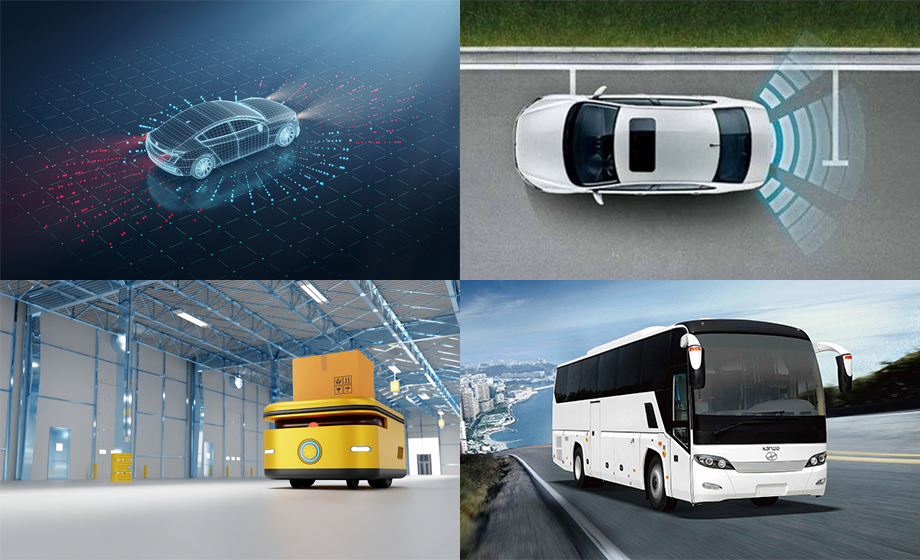24GHz/60GHz/77GHz Millimeter-Wave Radar Sensor Technology Market Analysis
International Market and Technology
Millimeter wave and laser technology have been widely used in the field of driverless cars, especially millimeter wave related technologies. In the development of driverless cars, millimeter-wave radar is often used as one of the sensors for driverless cars. The reason is that compared with lidar and cameras, millimeter-wave sensors measure longer distances and work stably in bad weather such as rain and snow. It can be seen that the millimeter wave radar sensor technology plays an important role in the field of driverless cars. This article will detail what you need to know about mmWave radar and how to use mmWave in driverless cars.

The technical barriers to millimeter-wave radar are high. Judging from the global market situation, the current market share is mainly occupied by foreign component giants. The top five suppliers in the global millimeter wave radar sensor market are Bosch, Continental, HELLA, Fujitsu Ten, and Denso, with a total market share of 68%. Companies such as TRW, Delphi, Autoliv, and Valeo are also important mmWave radar suppliers.
1. Characteristics of millimeter wave radar sensors
In terms of frequency selection of millimeter-wave radar, countries mainly have three frequency bands: 24GHz, 60GHz, and 77GHz, and they are currently approaching 77GHz. Europe and the United States chose 77GHz and Japan chose 60GHz to focus on research. With the wide application of 77GHz millimeter-wave radar worldwide, Japan has gradually turned to the development of 77GHz millimeter-wave radar.
At present, millimeter-wave radar is mainly in the form of 24GHzSRR (ShortRangeRadar) system + 77GHzLRR (LongRangeRadar) system. The 24GHz millimeter-wave radar sensor is mainly responsible for short-range detection, while the 77GHz millimeter-wave radar is mainly responsible for long-range detection.
1) The 77GHz radar is smaller than the 24GHz radar, and the wavelength of the GHz radar is less than one third of the 24GHz radar, so the area of the transceiver antenna is greatly reduced, and the size of the entire radar is effectively reduced, which is very beneficial to the pursuit of miniaturization.
2) The 77GHz radar can satisfy both high transmission power and wide operating bandwidth, enabling it to achieve long-range detection and high-range resolution at the same time.
3) 77GHz radar is difficult to design and manufacture in antenna, radio frequency circuit and chip, the technology maturity is relatively low, and the current cost is relatively high.
Judging from the product technical parameters of major foreign millimeter-wave radar suppliers, companies vary in the development of millimeter-wave radar. Bosch's millimeter-wave radar products are mainly 76-77GHz, mainly advanced product technology, mainly including MRR (medium range) and LRR (long range) two series, of which the LLR4 product has a maximum detection distance of 250 meters, among similar products. in an advanced position.
Continental's millimeter-wave radar products fully cover two frequencies, 24GHz and 77GHz, and mainly 77GHz products, with a wide range of product categories, including ARS441, ARS510, SRR520, SRR320 and other series. The detection distance of ARS441 long-range millimeter-wave radar can reach 250 meters, which is in an advanced position among similar products.
HELLA is also one of the suppliers of millimeter-wave radar sensors. As early as 2004, HELLA's first-generation 24GHz millimeter-wave radar was mass-produced. At present, HELLA's millimeter wave products are mainly 24GHz and it is an important manufacturer in the market.
Delphi's millimeter-wave radar products are also mainly based on 77GHz products. From the perspective of detection distance, they are mainly medium and short-range.
2. Advantages of millimeter wave radar sensors
Millimeter-wave radar has the advantages of wavelength, and millimeter-wave radar has the advantages of frequency bandwidth (large frequency range) and strong penetration ability:
1) Strong penetrating ability, not affected by weather. The atmosphere attenuates propagation in the radar band. Millimeter-wave radar is weaker than infrared, microwave, etc., and has strong penetrating ability, whether in clean air, rain, fog, smoke, or pollution. Millimeter-wave radar has a narrow beam, wide frequency band, and high resolution. It is not affected by day and night in the atmospheric window frequency band, and has the characteristics of all-weather.
2) The volume is small and compact, and the recognition accuracy is high. Millimeter-wave wavelengths, small antenna diameters, and small component sizes make millimeter-wave radar systems small, lightweight, and easy to install in cars. For the same object, the millimeter-wave radar has a large cross-sectional area and high sensitivity, and can detect and locate small targets.
3) Remote sensing and detection can be realized. Millimeter-wave radar sensors are divided into long-range radar (LRR) and short-range radar (SRR). Due to the weakening of millimeter waves in the atmosphere, they can detect and perceive longer distances. Among them, long-range radar can reach 200m perception and detection.
According to the many advantages of millimeter-wave radar, it currently occupies a large proportion in automotive anti-collision sensors. IHS mmWave/microwave radar data + cameras account for 70% of automotive collision avoidance sensors.



